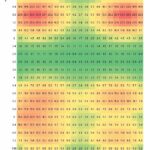The CivilWeb Buried Pipe Design suite of spreadsheets includes three main design spreadsheets, one each for rigid, flexible and semi-rigid buried pipe structural design. The spreadsheet carries out all calculations required by BS EN 1295-1 and is suitable for design of concrete, steel, plastic, clay or ductile iron pipes.
The spreadsheets include descriptions and typical values for all the required inputs and comes with a comprehensive 85 page design guide explaining the calculations in detail. The spreadsheet suite also includes a number of additional calculation tools for further detailed calculation of the inputs required by the main design spreadsheets.
Each spreadsheet includes unique design features including graphs showing the results for different backfill depths and showing the sensitivity of other key inputs. These unique features make these design spreadsheets quicker and easier to use than any other software available on the market today.
Introduction to Buried Pipe Design
The structural design of buried pipes can be a complex calculation which is partly why there has been no success in defining a common European design method. Currently EN 1295-1 outlines a few main design considerations and then the detailed design procedures are outlined in both the National Annex to BS EN 1295-1 and the companion document BS 9295.
The principles behind the design procedure for buried pipe design used in the UK is based on work by Marston, Spangler and Shlick in the 1920s and 1930s. This was codified into a UK design procedure in the 1950s and 1960s with the publication of simplified design tables. This design method has not changed greatly in the following half a century.
The principle of drainage pipe design is to calculate the loads acting on the pipe and then to determine the pipe’s response to these loads. If the pipe response is acceptable then the design is adequate. The type of pipe response expected is dependent on the stiffness of the pipe compared to the surrounding soils.
Rigid pipes such as concrete and clay pipes are much stiffer than the surrounding soils, and for this reason they attract large loads as the backfill soils settle under loading. The strength of the pipe is also affected by the bedding factor of the surrounding materials. Conversely flexible pipes such as plastic or thin walled steel pipes will deflect under load, effectively transferring that load into the surrounding soils. The strength of flexible pipe systems depends on the relative stiffness of the pipe and surrounding soils as evaluated by the Spangler Modulus. Some pipes such as ductile iron or thick walled steel pipes will behave in a mixture of rigid and flexible manners.
For this reason the design procedures used for rigid, semi-rigid and flexible pipes are different. They have different loadings from the backfill soils and they have different design parameters which need to be evaluated. Rigid pipes are evaluated for strength to ensure that they do not fracture under the load. Flexible pipes however will not typically fracture under load, but they may deflect so much that the hydraulic capacity of the pipes is reduced and the pipe is no longer serviceable.
Detailed explanations of the design procedures are available on this site for rigid, flexible or semi-rigid pipes.
Our Buried Pipe Design suite includes;
- Rigid Pipe Design - For concrete or clay pipes our Rigid Pipe Design and Analysis spreadsheet allows the user to quickly complete buried pipe designs in accordance with BS EN 1295-1.
- Flexible Pipe Design - For thin walled steel and plastic pipes our Flexible Pipe Design and Analysis spreadsheet allows the user to quickly complete buried pipe designs in accordance with BS EN 1295-1.
- Semi-Rigid Pipe Design - For thick walled steel or ductile iron pipes our Semi-Rigid Pipe Design and Analysis spreadsheet allows the user to quickly complete buried pipe designs in accordance with BS EN 1295-1.
- Boussinesq Loads on Buried Pipes - Our unique analysis tool uses the Boussinesq theory to calculate the vertical soil pressures acting on buried pipes from concentrated and universally distributed surcharge loads.
- Minimum Trench Widths Calculator - This tool can be used to check the minimum trench widths required for pipes of any diameter installed at any
- Plane of Equal Settlement Calculator - This unique tool uses an iterative calculation technique to directly calculate the plane of equal settlement. This can then be directly input into the main buried pipe design spreadsheets.
- kμ Calculator - This tool can be used to estimate the values of k and kμ from a μ input. This can be used to model backfill soil from known parameters and can be input by the user into the main design spreadsheets.
Get the full license version now for only £20. This includes;
- Buried Pipe Design Spreadsheet with all inputs available.
- Free comprehensive 85 page Ultimate User Guide. This includes detailed information and typical values for all the required inputs and an explanation of the design standards and principles used in the spreadsheet.
- 7 additional calculation sheets as detailed above including Boussinesq Loads on Buried Pipes and Plane of Equal Settlement Calculator.
All purchases are covered by our full money back guarantee.
Or why not bundle the CivilWeb Buried Pipe Design spreadsheet with our Pipe Flow Calculator for only £5 extra?
Or save £50 by buying our full Drainage Design Suite including all our drainage design spreadsheets.
Download Free Trial Version
To try out a fully functional free trail version of this software, please Click Here or enter your email address below to sign up to our newsletter.












